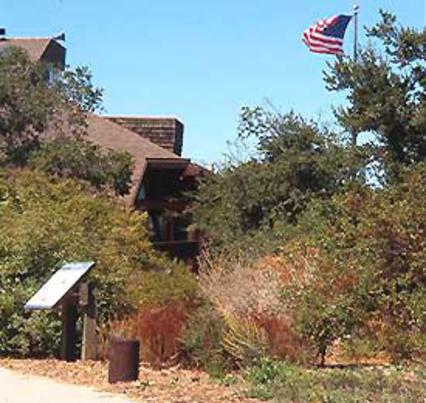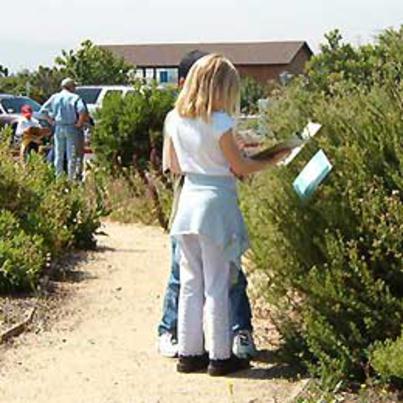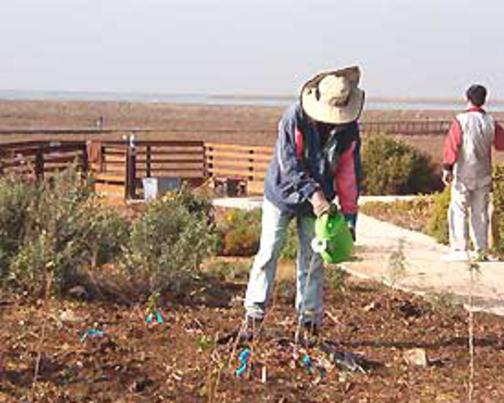Growing Natives Garden Tour 2010
Don Edwards SF Bay National Wildlife Refuge Native Plant Demonstration Garden (4 photos from 2006)
Garden #31, Alviso
While this garden is open all year round, visiting it during the tour day provides an opportunity to ask the docents about any particularly interesting plants or features.
Address: 1751 Grand Blvd, Alviso.
Directions: From 101, take 237 East; from 880/680, take 237 West. Exit at Zanker Road and go north towards the bay for approximately 2 miles, passing the Water Pollution Control plant, landfill, and railroad tracks. Watch for the large brown sign on the right reading "Don Edwards SF Bay National Wildlife Refuge". Make a sharp RIGHT turn immediately after this sign and follow the access road to the EEC parking lot.
Showcase Features: This restoration research area provides a glimpse of rare upland plant communities. While less than 1% of the Bay Area's natural uplands remain, the U.S. Fish and Wildlife Service is transforming this former dump into valuable upland habitat. Work done in this restoration research area has led to advances in native plant propagation and seeding technology, natural weed control techniques, and understanding of native plant communities.
The site also includes a demonstration garden, which was created to augment the Refuge's restoration efforts by promoting native plant gardening in the community. Support from community gardeners is needed to prevent further loss of upland plant and animal species. Native plant gardens help rebuild the native seed bank, combat invasive weeds, support native pollinator populations, and provide additional habitat for wildlife. This garden contains mature specimens of ceanothus, fuchsia-flowered gooseberry, pink flowering currant, buckwheat, toyon, and black sage in a naturalistic setting. Among trees, look for California buckeye, western sycamore, Fremont cottonwood, coast live oak, and alder.
Other Garden Attractions: Look for the bioswale between the parking lot and the driveway. Landscaped with rushes, sedges, and willows, it acts as a natural filtration system, mitigating the ecological impacts of the parking lot.
On weekends the Environmental Education Center exhibits and facilities are open to the public. A 0.5 mile trail guides visitors through the upland restoration research area. During the GNGT, staff will be available to answer questions about restoration and the demonstration garden.
Gardening for Wildlife: A butterfly garden contains milkweeds, coffeeberry, and other host and nectar plants for monarchs, swallowtails, cabbage whites, and western pygmy blue butterflies. Black phoebes, warblers, sparrows, and bushtits are drawn to the songbird garden. Also common in the restoration area and demonstration garden are hawks, western fence lizards, jackrabbits, cottontails, gopher snakes, and grey foxes. Information about gardening for wildlife is available in the Environmental Education Center.
Years of CA Native Gardening at this Location: 19
Garden Size: 1.5 acre Demonstration Garden, 6 acre Upland Restoration Research Area
Designer: Community Volunteers
Installer: Community Volunteers and USFWS
Click here to download the plant list in PDF format (from year 2006).
Find us on:

 Donate
Donate









